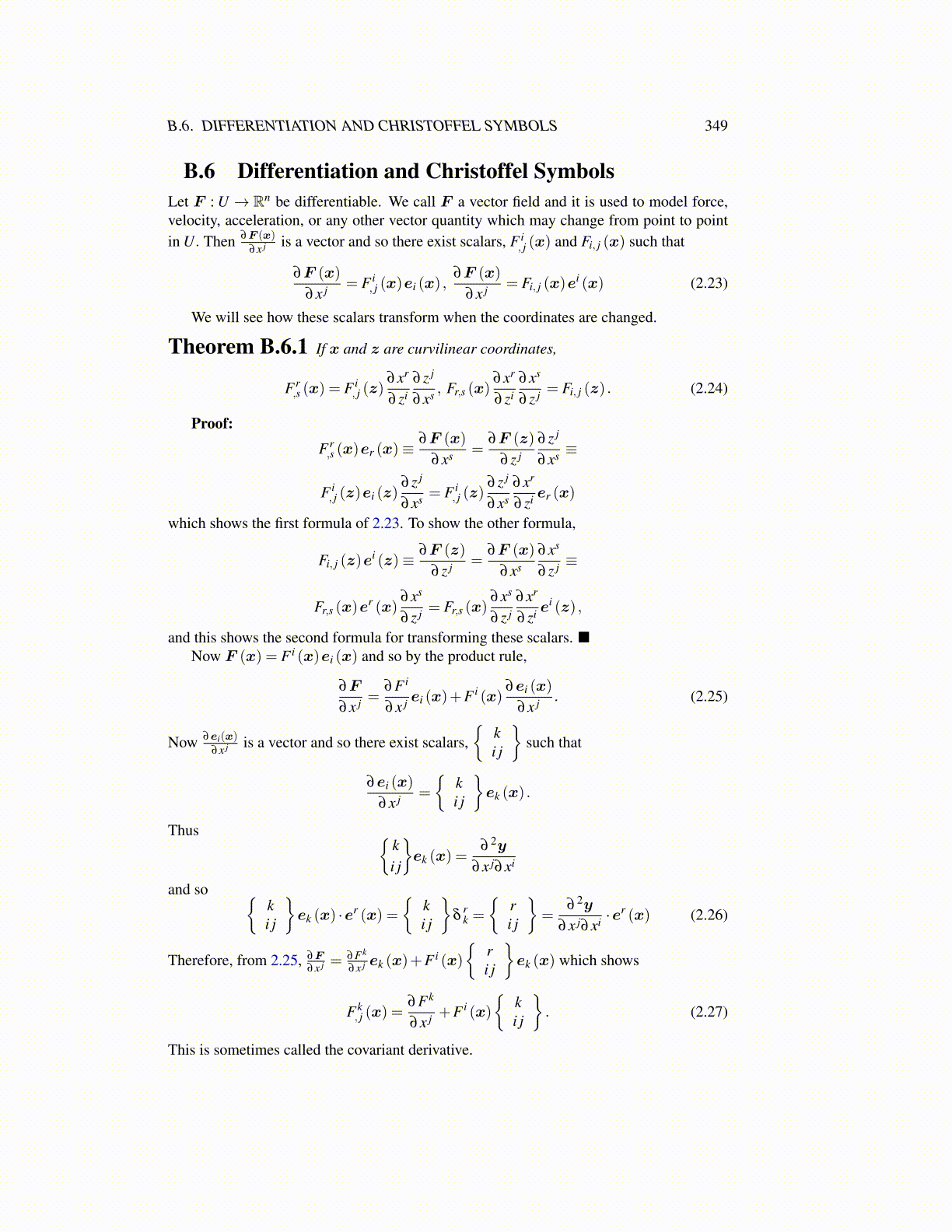
B.6. DIFFERENTIATION AND CHRISTOFFEL SYMBOLS 349
B.6 Differentiation and Christoffel SymbolsLet F : U → Rn be differentiable. We call F a vector field and it is used to model force,velocity, acceleration, or any other vector quantity which may change from point to pointin U. Then ∂F (x)
∂x j is a vector and so there exist scalars, F i, j (x) and Fi, j (x) such that
∂F (x)
∂x j = F i, j (x)ei (x) ,
∂F (x)
∂x j = Fi, j (x)ei (x) (2.23)
We will see how these scalars transform when the coordinates are changed.
Theorem B.6.1 If x and z are curvilinear coordinates,
Fr,s (x) = F i
, j (z)∂xr
∂ zi∂ z j
∂xs , Fr,s (x)∂xr
∂ zi∂xs
∂ z j = Fi, j (z) . (2.24)
Proof:
Fr,s (x)er (x)≡
∂F (x)
∂xs =∂F (z)
∂ z j∂ z j
∂xs ≡
F i, j (z)ei (z)
∂ z j
∂xs = F i, j (z)
∂ z j
∂xs∂xr
∂ zi er (x)
which shows the first formula of 2.23. To show the other formula,
Fi, j (z)ei (z)≡ ∂F (z)
∂ z j =∂F (x)
∂xs∂xs
∂ z j ≡
Fr,s (x)er (x)
∂xs
∂ z j = Fr,s (x)∂xs
∂ z j∂xr
∂ zi ei (z) ,
and this shows the second formula for transforming these scalars. ■Now F (x) = F i (x)ei (x) and so by the product rule,
∂F
∂x j =∂F i
∂x j ei (x)+F i (x)∂ei (x)
∂x j . (2.25)
Now ∂ei(x)∂x j is a vector and so there exist scalars,
{ki j
}such that
∂ei (x)
∂x j =
{ki j
}ek (x) .
Thus {ki j
}ek (x) =
∂ 2y
∂x j∂xi
and so {ki j
}ek (x) ·er (x) =
{ki j
}δ
rk =
{ri j
}=
∂ 2y
∂x j∂xi ·er (x) (2.26)
Therefore, from 2.25, ∂F∂x j =
∂Fk
∂x j ek (x)+F i (x)
{ri j
}ek (x) which shows
Fk, j (x) =
∂Fk
∂x j +F i (x)
{ki j
}. (2.27)
This is sometimes called the covariant derivative.